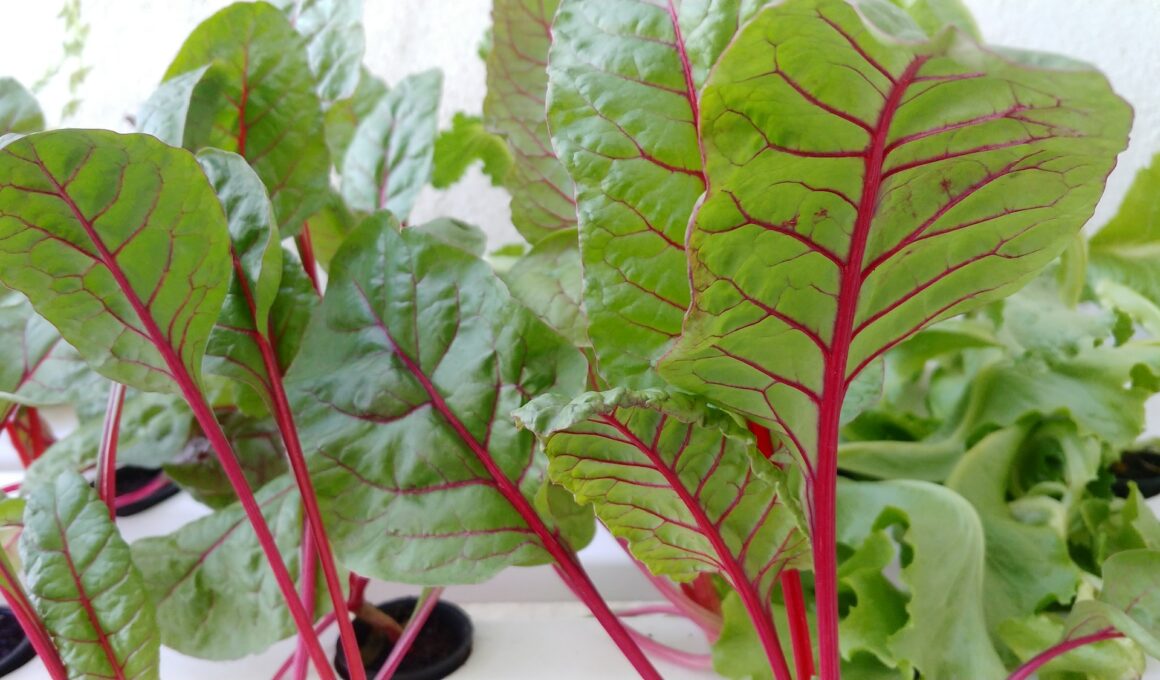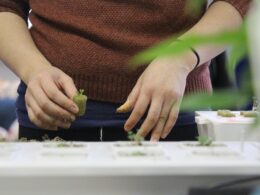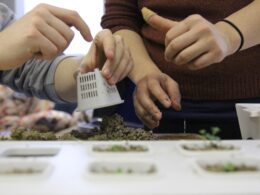Are your plants looking a little wilted lately? Are the leaves turning yellow and falling off? You may be dealing with root rot. This fungal disease affects the roots of plants, causing them to decay and ultimately leading to the death of the plant.
But don’t despair! There may be hope for your plants yet. With the right knowledge and techniques, you may be able to reverse root rot and save your beloved greenery.
In this article, we’ll explore the causes and symptoms of root rot, as well as steps you can take to potentially reverse the damage. So read on and learn how to give your plants a fighting chance against this pesky disease.
Understanding the Causes of Root Rot
So, you’re probably wondering how this pesky plant problem came about in the first place. Root rot is a fungal disease that affects a wide range of plants, including popular species like tomatoes, peppers, and strawberries. The fungus thrives in moist soil, making overwatering the main culprit for its development.
However, there are other factors that can contribute to root rot. These include poor soil drainage, lack of oxygen in the soil, and planting in a pot that’s too small for the plant.
To identify the cause of root rot, look for other signs besides overwatering. For example, if the plant is planted in compacted soil, it may have trouble absorbing water and nutrients, leading to root rot.
To prevent root rot, it’s important to take steps to improve soil drainage and avoid overwatering. This can be done by adding organic matter to the soil, using a well-draining potting mix, and ensuring proper drainage for outdoor plants.
If root rot has already set in, there are steps you can take to potentially reverse the damage, such as trimming away infected roots and applying a fungicide. However, prevention is always the best course of action when it comes to root rot.
Recognizing the Signs and Symptoms of Root Rot
Take note of any wilting or yellowing leaves, as well as a foul odor emanating from the soil, to catch any potential plant problems early on and give them the best chance at recovery. These are some of the signs and symptoms of root rot, a fungal disease that affects many common plants, including tomatoes, peppers, and lettuce.
Root rot is caused by overwatering, poor soil drainage, or soil with a high pH level. If left untreated, it can lead to the death of the plant. Fortunately, there are treatment options available for plants with root rot.
The first step is to remove any infected soil and trim off any dead or damaged roots. It’s important to use sterilized tools to prevent the spread of the disease. Then, replant the plant in fresh, well-draining soil. Water the plant only when the top inch of soil is dry to the touch, and make sure to avoid getting water on the leaves. You can also use fungicides to help control the disease.
In conclusion, recognizing the signs and symptoms of root rot early on is crucial for the survival of your plants. Take note of any wilting or yellowing leaves, as well as a foul odor emanating from the soil. If you suspect root rot, act quickly to remove infected soil and trim off any dead or damaged roots. Replant the plant in fresh, well-draining soil, and be sure to water it properly. With the right treatment, your plants can recover from root rot and thrive once again.
Steps to Potentially Reverse Root Rot
To potentially save your struggling plants, try these steps that may help bring them back to life. First, start by removing the affected plant from its pot and inspecting the roots. Cut away any rotten or mushy roots with a sterile pair of scissors or shears.
Once all the dead roots are removed, let the plant dry out for a day or two to prevent further damage. Next, consider treating root rot with natural remedies. One option is to use a mixture of hydrogen peroxide and water to help kill off any remaining fungus. Another natural remedy is to use cinnamon powder, which has antifungal properties.
Simply sprinkle cinnamon on the soil and around the base of the plant. Additionally, adding beneficial bacteria or fungi to the soil can help restore the natural balance and prevent future root rot. If you’ve tried these steps and your plant still isn’t thriving, consider consulting a plant specialist for help.
They can provide more targeted advice and potentially prescribe a fungicide to treat the root rot. Remember, prevention is key in avoiding root rot in the first place. Make sure your plants are in well-draining soil, not overwatered, and receive proper sunlight and air circulation. With a little care and attention, your plants can bounce back from root rot and thrive once again.
When to Give Up and Start Fresh
If your plant is still struggling despite your best efforts, it might be time to consider starting fresh with a new plant and implementing better care practices to prevent future issues.
Assessing the damage is crucial to determine if it’s worth the time and effort to save the plant. If more than half of the roots are affected, it’s unlikely that the plant will survive, and it’s best to start anew.
Salvaging plants is possible if caught early on, but it’s not a guarantee. You can try pruning away infected roots and repotting the plant in fresh soil. However, it’s important to choose the right soil type for the plant species, as some plants require specific soil pH levels and nutrients.
Choosing new plants can be exciting, but it’s important to do your research and select a plant that is suitable for your home environment and level of care. Consider factors such as lighting, humidity, and watering needs. Additionally, choosing the right soil type and pot size can also contribute to the plant’s health and success.
Remember, prevention is key to avoiding future root rot issues.
Preventing Root Rot
By implementing best practices, you can prevent root rot from damaging your plants. Proper drainage is crucial to preventing excess moisture from accumulating in the soil. Make sure your pots have drainage holes and avoid letting water sit in the saucer beneath the pot.
Additionally, use a soil mix that allows for adequate drainage and air circulation. Regularly checking soil moisture levels is another important step in preventing root rot. Stick your finger into the soil and if it feels moist, wait to water.
Overwatering is a common cause of root rot, so it’s important to let the top few inches of soil dry out before watering again. Using a moisture meter can also help you accurately gauge when it’s time to water. Natural remedies can also help prevent and treat root rot.
One option is to use a diluted hydrogen peroxide solution to water your plants. This can help aerate the soil and kill harmful bacteria and fungi. Another option is to use beneficial microbes, such as mycorrhizae, which can help strengthen the plant’s root system and protect against pathogens.
By following these best practices and using natural remedies, you can prevent root rot and keep your plants healthy. Remember to always check soil moisture levels, provide proper drainage, and use the appropriate pot size and soil type. With a little extra care, your plants will thrive and bring beauty to your home.
Frequently Asked Questions
Can root rot spread to other plants in the same pot or nearby?
To prevent cross contamination of root rot to other plants in the same pot or nearby, it’s important to keep an eye out for early warning signs. These signs may include yellowing or wilting of leaves, foul smelling soil, or blackened roots.
It’s important to isolate any plants showing these symptoms and remove them from the area to avoid spreading the root rot. Regularly checking the soil moisture levels and ensuring proper drainage can also help prevent the occurrence of root rot.
By taking these preventative measures, you can help ensure the health and safety of your plants.
How long does it take for a plant to recover from root rot?
If your plant is suffering from root rot, there are a few things you can do to speed up its recovery. First, make sure you’re not over-watering your plant, as this can contribute to the problem. Instead, let the soil dry out between waterings.
You can also try repotting your plant in fresh, well-draining soil to help it recover. Look out for signs of root rot, such as yellowing leaves, wilted stems, and a foul odor coming from the soil. If you catch it early, you may be able to save your plant. However, if the root rot has already taken hold, it may be difficult to reverse the damage.
Be patient, as it can take several weeks or even months for your plant to fully recover.
Should I remove all the soil from the pot when trying to reverse root rot?
To reverse root rot in your plants, it’s recommended to remove all the soil from the pot. By doing so, you’ll be able to inspect the roots and see the extent of the damage. This will also provide an opportunity to prune any damaged roots.
Repotting the plant in fresh, well-draining soil will help prevent further damage and encourage healthy root growth. The benefits of repotting include better nutrient and water absorption, which will help the plant recover from the root rot.
Remember, removing all the soil from the pot is an important step in reversing root rot and ensuring the health of your plant.
Can root rot be caused by over-fertilizing or using the wrong type of soil?
If you’re struggling with root rot, there are a few things you can do to help fix the problem.
First, if you think over-fertilizing may be the culprit, you’ll want to start by reducing the amount of fertilizer you’re using. This can help prevent further damage to the roots and give the plant a chance to recover.
Additionally, it’s important to choose the right soil type for your plants. Make sure you’re using a well-draining soil that allows water to move freely through the pot.
By taking these steps, you can help give your plant the best chance of recovering from root rot.
Are there any natural remedies for treating root rot?
If you’re dealing with root rot, there are a few natural remedies you can try before resorting to harsh chemicals.
One option is to use vinegar and cinnamon. Mix equal parts of both and apply to the soil around the affected plant.
Another option is hydrogen peroxide, but the pros and cons should be weighed carefully. While it can effectively kill the fungus causing the rot, it can also harm beneficial microbes in the soil.
It’s important to note that these remedies may not completely cure the root rot, but they can help alleviate some of the symptoms. Prevention is key, so make sure to properly water your plants and use well-draining soil to avoid future issues.
Conclusion
So, can you reverse root rot? The answer, unfortunately, is that it depends.
Understanding the causes of root rot and recognizing the signs and symptoms early on are crucial in potentially reversing the damage. However, even with proper care, sometimes it may be too late to save the plant.
If you do suspect that your plant is suffering from root rot, don’t give up hope just yet. Take quick action and follow the steps outlined in this article. With a bit of luck and a lot of TLC, you may be able to nurse your plant back to health.
But remember, prevention is always better than a cure. Take steps to prevent root rot from occurring in the first place by providing proper drainage and avoiding overwatering.









